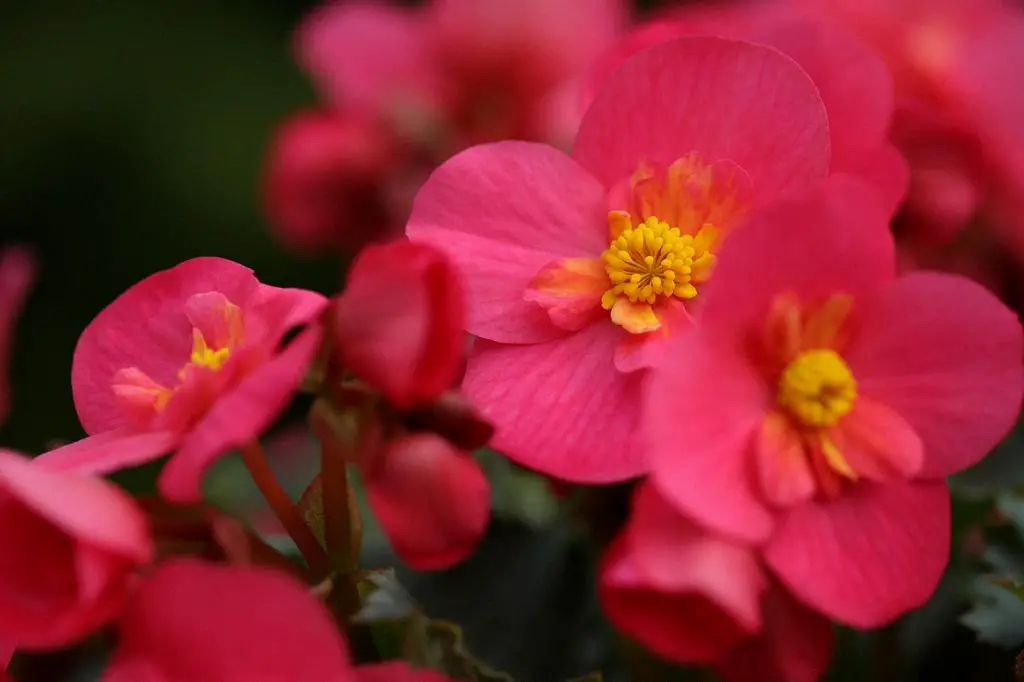Growing begonias in pots can be a rewarding experience for any gardener, adding a splash of vibrant colors and textures to your outdoor or indoor space. If you’re looking to cultivate these beautiful plants, here’s a detailed guide on how to grow begonias in pots.
Choosing the Right Begonias
Before you start planting begonias in pots, it’s essential to select the right type of begonia for your specific needs. Begonias come in various varieties, including tuberous begonias, fibrous begonias, and rhizomatous begonias, each with its unique characteristics and growing requirements.
Planting Begonia Tubers
If you’re starting with begonia tubers, plant them in March or April into individual pots or a seed tray with the hollow side facing up. Ensure to plant them approximately 2.5cm deep in the soil, and place them in a warm location with a minimum temperature of 18°C to encourage germination.
Potting On Begonias
Once the begonia leaves start to emerge, it’s time to consider potting them on into larger containers. Choose pots that provide ample space for root growth and fill them with peat-free, multi-purpose compost to support the plant’s nutrient needs.
Light and Temperature Requirements
Begonias thrive in bright, indirect light conditions. Ensure your potted begonias receive adequate sunlight without being exposed to direct sunlight, which can scorch their delicate leaves. Additionally, maintain a consistent temperature of around 18-22°C for optimal growth.
Watering and Feeding
Proper watering is crucial for healthy begonia growth. Keep the soil consistently moist but not waterlogged to prevent root rot. During the growing season, feed your begonias with a balanced liquid fertilizer every two weeks to promote lush foliage and vibrant blooms.
Pruning and Deadheading
To encourage bushier growth and prolonged flowering, regularly prune your begonias by pinching off faded blooms and leggy stems. Deadheading promotes continuous blooming and helps maintain the plant’s shape throughout the growing season.
Pest and Disease Management
Keep an eye out for common pests like aphids, mealybugs, and spider mites that can infest begonias. Treat any infestations promptly with organic insecticidal soap or neem oil to prevent damage to the plant. Additionally, ensure proper air circulation around your begonias to reduce the risk of fungal diseases.
Overwintering Begonias
As the colder months approach, consider overwintering your potted begonias indoors to protect them from frost. Reduce watering frequency during the dormancy period and provide sufficient light to prevent leggy growth. You can also propagate begonias through stem cuttings to ensure a continuous supply of plants.
Container Selection and Maintenance
When choosing containers for your begonias, opt for pots with adequate drainage holes to prevent waterlogging. Regularly inspect and clean your pots to remove any debris or mineral deposits that can impede drainage and airflow. Repot your begonias every 2-3 years to refresh the soil and encourage healthy growth.
Conclusion
By following these guidelines on how to grow begonias in pots, you can create a stunning display of these versatile plants in your garden or indoor space. With proper care and attention to their specific needs, begonias will reward you with lush foliage and spectacular flowers throughout the growing season.

